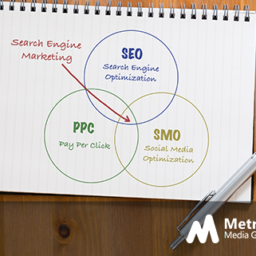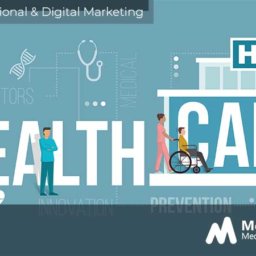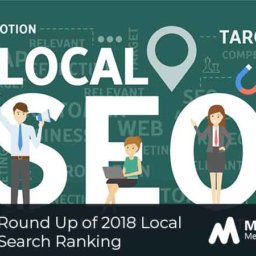5 Point Checklist for Launching a Healthcare Marketing Initiative

Most healthcare organizations; hospitals, clinics, and surgery centers put a lot of money on the line when it comes to marketing. That’s why it is super important to make sure that no detail in the plan is overlooked. In fact, it often means that staff spends more time focusing on the small details rather than the big picture in order to maximize ROI. You need to have purpose and direction in a strategic healthcare marketing plan to ensure that your campaign runs successfully from start to finish.
If you’re a healthcare organization looking to expand your service offerings, you would want to ask yourself some simple questions. For instance:
- Who do I want to reach?
- How do I reach them?
- Which services lines do I want to target?
- How will I measure results? Calls, Scheduled Appointments, Completed Procedures
These will help you flush out the big picture of your initiative. You need to first hone in on your target audience and determine which mediums will be most effective at communicating your message. You can then continue asking more questions to refine your target demographic, such as how old are they, what is their lifestyle, where do they live, etc. With each question you will get closer and closer to a view of a specific patient that you are trying to reach. When it comes to marketing, specificity is everything.
The same applies for the service lines you plan to target. For example, if you are looking to drive more efforts toward a specific service line to increase revenue or fill an occupancy level. Will there be follow initial consults along with schedule and follow up appointments? What are you looking to measure with the initiative? Gauging success could mean that X amount of people called, Y scheduled an appointment, and Z completed a procedure, etc.
With this broad picture in mind, use this checklist as a guide for launching your new healthcare marketing initiative.
5 Point Checklist for a
Healthcare Marketing Initiative
1. What Is The Tangible Goal?
This is the most basic place you can start. What is the goal of what you’re trying to do? For instance, if you’re thinking about expanding your service offerings by implementing a new service line, what is your vision of success? Maybe you are trying to bring in new patients or raise revenue? Or you want to build authority to your facility? Whatever your goal is, you should make sure it is clear and measurable. That is the only way that you will be able to succeed, or at least learn from the failure.
2. What Value Are You Offering?
This is the most basic place you can start. What is the goal of what you’re trying to do? For instance, if you’re thinking about expanding your service offerings by implementing a new service line, what is your vision of success? Maybe you are trying to bring in new patients or raise revenue? Or you want to build authority to your facility? Whatever your goal is, you should make sure it is clear and measurable. That is the only way that you will be able to succeed, or at least learn from the failure.
3. Who Is Your Audience?
Knowing who you need to reach with your healthcare marketing is at the crux of your strategic planning. What is their age range? Gender? Race? Geographical location? Income level? Have you developed trustworthy buyer personas? You have to have a thorough understanding of the needs and behaviors of your audience in order to craft a message that will resonate with them. It’s only possible to really connect with people when you are truly in touch with their needs and concerns.
4. What Channels Well Help You Reach Your Audience?
Once you’re finishing up the research and planning stage of your launch, it’s time to shift your focus on distribution. You have crafted your message and now you need to know which channels will best deliver it. The 80/20 rule stipulates that 20% of your time should be devoted to crafting a message leaving the other 80% for distribution. That clearly shows how important it is in the hierarchy of tasks.
If your demographic consists of males under 30 who are in a low income bracket, for example, you might choose a different approach than females in their 60s in a high income bracket. This involves doing some research on which channels are most popular with each demographic. Instagram and Facebook might appeal to a younger audience, for example, which television and radio might appeal to an older audience or people who live in rural areas, etc.
Deciding on channels is not an exact science, but it’s safe to say that you should choose a multi-platform approach that incorporates both traditional and digital media. Having a blend of social media sponsored posts, content marketing, paid search ads, tv and radio can help boost your chances of getting your message heard.
Set up a clear workflow for each of your campaigns. If you have a website listed on your marketing materials, make sure you track where the clicks are coming from, so you can see which visitors were brought in by digital ads, social media, organically, etc.
5. Can YOU Measure It?
As you’re putting these processes into place, make sure you have a process and the ability to track your results. Collecting and looking at the data is one of the most valuable steps in your initiative because it will help you understand how efficient your work was and how you can improve going forward.
When measuring data, it’s important to outline clear key performance indicators (KPIs) that show you how successful your initiative actually was. For instance, if your goal was to generate increased revenue from a certain department, the KPI could be how much additional revenue you brought in that year or the number of new patients. These numbers are important for outlining clear and concrete steps to accurately prove whether or not you met your goals. Collect as much data as you can and devote time to analyzing it after the fact in order to optimize future performance.
Related Article: Combining Traditional and Digital Media in Healthcare Marketing
If you’re looking for help in creating a healthcare marketing initiative,
contact us or call us directly at 1-866-477-4420.













